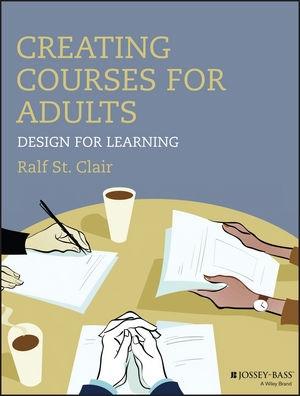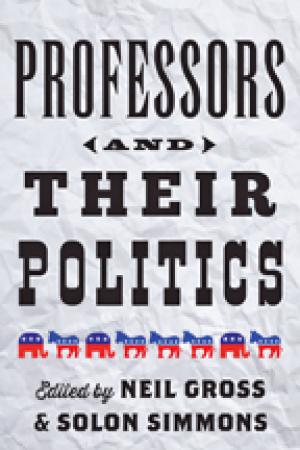Resources by Merrill Hawkins

Ralf St. Clair’s instructive book on designing courses will provide helpful guidance to new professors and a meaningful review to those seasoned in the classroom, along with some potentially new material for those veterans. Divided into ten well-defined chapters, Creating Courses for Adults walks readers through the learning theory associated with the adult student population, as well as the practical logistics of designing different kinds of courses for different adult populations. The array of courses discussed range from online for credit instruction to non-credit onsite education for trade school students. Taking seriously the role and the needs of the professor and not just the students, St. Clair begins with a welcomed and affirming chapter, “All About You,” which includes a very helpful section entitled, “Why Who You Are and What You’ve Done Matters.” While this book accepts that teaching is about the students, the author accepts the often unappreciated fact that teaching is also about the needs of the professors, who feel a sense of vocation to this work. St. Clair operates out of the helpful notion that “nobody is an intuitive or completely natural teacher” (page xii), a claim that will challenge seasoned instructors to continue to plan and will encourage new professors with their often unarticulated sense of intimidation. Several chapters are especially rich in what they provide the planning process. Chapter three, “Context Drives Design,” makes distinctions among formal learning, non-formal learning, and informal learning. Adult learners may bring previous experience in formal learning to the classroom, since formal learning is education that leads to a diploma or certificate. They will certainly bring experience in non-formal learning, such as that experienced in an open-ended group, and informal learning, which refers to learning achieved through everyday activities. In fact, the latter two learning experiences can so shape the approach to education of adult learners that it becomes difficult for them to embrace a world of formal learning, even if it is adult-education friendly. For this reason, teachers must give some thought in course design to preparing students for the particular educational context that the course provides. St. Clair also offers helpful approaches to online learning. In addition to a useful bibliography of online course design material, St. Clair proposes that design issues in online education do not fundamentally differ from onsite education. Citing current literature that explains online course design, St. Clair concludes that the best literature provides questions for online course design that do not substantially differ from face-to-face education. While acknowledging that his conclusion will not be universally accepted, St. Clair nonetheless provides an affirmation that online education can be informed by the same theoretical approaches that guide other forms of education. Readers wanting an accessible approach to course design, grounded in both theory and application, will find St. Clair’s Creating Courses for Adults to be valuable. The book belongs in the collection of any teaching and learning center of higher education for its content and its current bibliography.

This edited volume addresses the common assumption that professors have overwhelmingly liberal or radical political views and that they have significant biases against conservative thought. Grounded in both quantitative and qualitative research, the editors suggest that the common stereotype of academic culture as hostile to political worldviews that do not fall on the leftwing of a continuum does not stand up to the scrutiny of data. Instead, their eleven chapter, method-rich book reveals the political and social thought of most individual members of the academy is, indeed, typically progressive, but that the effect of these individual worldviews on the collective environment of higher education is more nuanced. Moreover, the standard notion that so-called liberal professors discriminate against conservatives because they are conservatives does not emerge from the results of any of the contributors’ work. The backdrop for much of the book is an agreement on the part of the editors that American higher education is in crisis. This crisis involves many factors, including finances. Colleges and universities are feeling the effects of a constricting economy. Competition for students is fierce. The need for revenue is great and institutional endowments are shrinking. That some attribute the crisis in higher education to the social thought of the educators in higher education motivated this study to examine the precise nature of higher education’s social worldview. The volume’s primary orientation is the sociology of higher education and includes the sociology of intellectuals. A unifying observation is that the professoriate, as well as other elements of the academy, possesses a progressive political worldview. This worldview grows from a number of factors, including but not limited to the social class of those who enter professions in higher education. The current orientation of the academy toward progressive politics is not new and studies of it are not new, either. Gross and Simmons provide a brief survey of literature exploring the history of political and social views of academics, noting the significant presence of higher education professionals who worked in New Deal related positions in addition to their work in colleges and universities. Their book, focused on the current state of affairs, explores higher education since 2006. Professors and their Politics has value for all professionals associated with American higher education. The various studies in the book make a case for why progressive values are dominant among those who enter vocations associated with colleges and universities, as well as how these values shape research agendas, hiring practices, and treatment of students. If their conclusions are correct, and the various authors have provided data to support verifiable conclusions, the political life of the academy is a sign of its vitality, not a cause of its crisis, and the vitality of the academy includes more support for diversity of thought, especially among students, than common stereotypes assume. This volume makes an important contribution to understanding the culture of contemporary higher education.